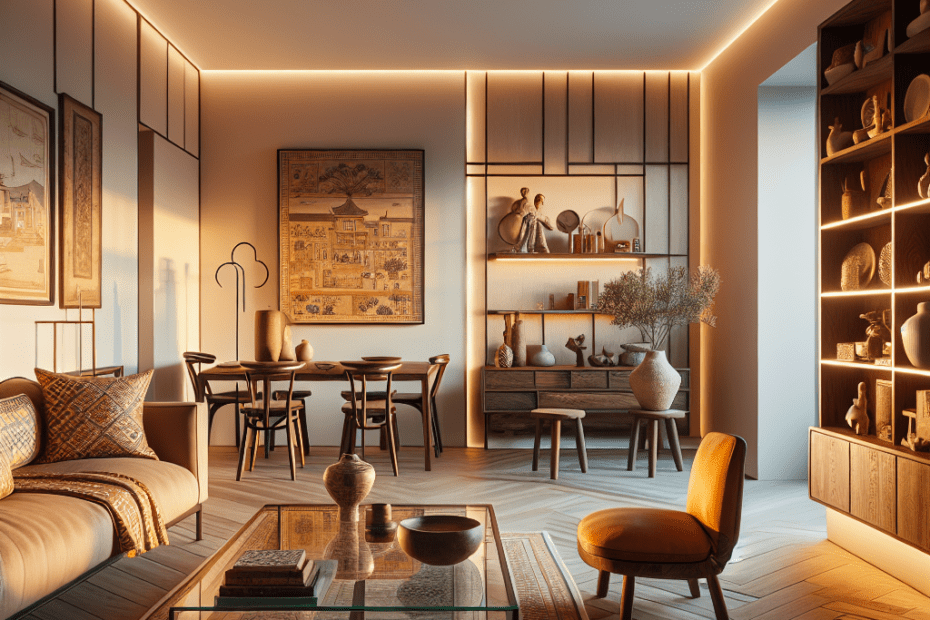“`html
Embracing the Blend: Tips for Combining Modern and Vintage Furniture
In recent years, homeowners seeking distinctive home decor have turned to mixing modern and vintage furniture to create spaces brimming with personality. According to a survey by Houzz, over 33% of homeowners are now combining different styles to express their personal taste, and this trend continues to gain traction as people look for ways to make their homes uniquely their own.
The Benefits of Mixing Modern and Vintage Furniture
Mixing modern and vintage furniture allows individuals to craft a home environment where contemporary functionality meets timeless charm. Modern furniture brings sleek lines and simplicity, while vintage pieces often offer intricate details and craftsmanship hard to find in mass-produced goods today. This fusion can achieve a balanced aesthetic that feels welcoming and lived-in.
Essential Tips for a Harmonized Blend
Achieving harmony between modern and vintage elements requires intentional choices and a keen eye for balance. Here are some essential tips to consider:
1. Establish a Unified Color Palette
Colors play a crucial role in tying different pieces together. They should choose a color palette that complements both their modern and vintage items. Neutral shades like white, beige, and gray often work well as base colors, allowing colorful vintage pieces to pop without clashing.
2. Highlight Unique Pieces
When mixing modern and vintage furniture, it’s essential to let unique pieces shine as focal points. A vintage chair or a retro lamp can serve as a statement piece, standing out amidst contemporary elements. This approach adds depth and character to any room.
3. Balance Proportions
Scale and proportion are vital components in design. They should ensure that the sizes of their modern and vintage pieces complement each other. For instance, pairing a large vintage coffee table with a modern, sleek sofa ensures that neither piece overpowers the other.
4. Blend Textures and Materials
A tactile experience can tie their style together seamlessly. Mixing materials like wood, metal, and fabric allows for an interplay of textures that can bridge the gap between old and new. For example, they might pair a metal-framed modern chair with a vintage wooden table for an industrial touch.
5. Integrate Vintage Accessories
Sometimes, accessorizing with vintage elements can be less intimidating than large furniture pieces. Incorporating vintage artwork, mirrors, or rugs can add personality while maintaining the modern feel.
Statistics on Home Style Preferences
| Style Preference | Percentage of Homeowners |
|---|---|
| Modern Only | 25% |
| Vintage Only | 12% |
| Mixed Modern and Vintage | 33% |
| Other Styles | 30% |
(Source: Houzz Home Design Survey)
Design Inspirations from Mixing Styles
Combining modern and vintage furniture often reveals unexpected harmony and creativity. Here are some inspirational ideas for those who may be hesitant to take the plunge:
- Using a mid-century modern chair against a classic Victorian desk can add visual contrast and interest.
- A contemporary sofa paired with a vintage Persian rug offers a cozy yet stylish look.
- Frame contemporary art in vintage frames to add a unique twist to modern artwork.
Key Takeaways
- Combining modern and vintage furniture is an increasingly popular trend that offers unique character to a home.
- Successfully mixing styles relies on choosing a cohesive color palette and ensuring balance in proportions and materials.
- Highlighting statement pieces and incorporating vintage accessories can tie the space together.
- A significant portion of homeowners are embracing mixed styles to reflect personal taste and creativity.
FAQ
-
How can I start incorporating vintage pieces into my modern home?
Start by choosing a few accessories like lamps or artwork that blend well with your existing decor. Gradually, integrate larger pieces.
-
Is there a risk of my space looking cluttered when mixing styles?
Yes, to avoid clutter, focus on one or two statement vintage pieces per room and maintain a complementary color scheme.
-
What type of modern materials complement vintage pieces?
Materials such as glass, metal, and streamlined wood pieces can enhance the presence of vintage furniture without overpowering it.
-
Do vintage and modern furniture have a price difference?
Yes, vintage pieces are often antiques and may be more expensive, but they can be more affordable than designer modern furniture.
-
Where can I find vintage furniture?
They can find vintage furniture in antique shops, flea markets, or online platforms like eBay and Etsy.
“`
